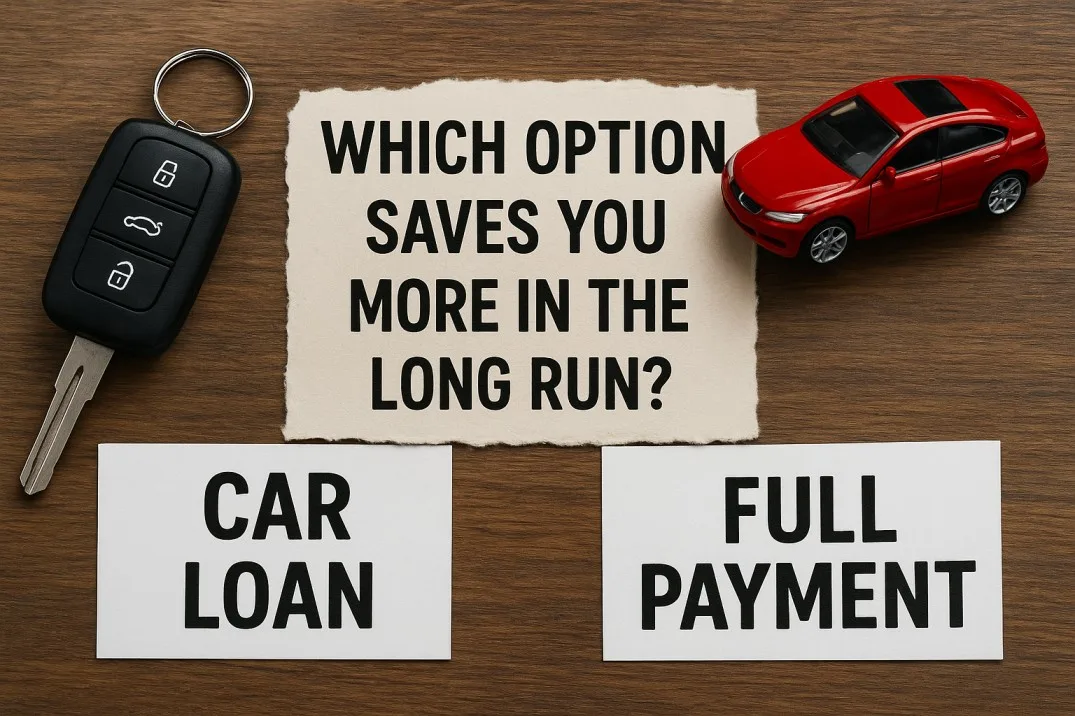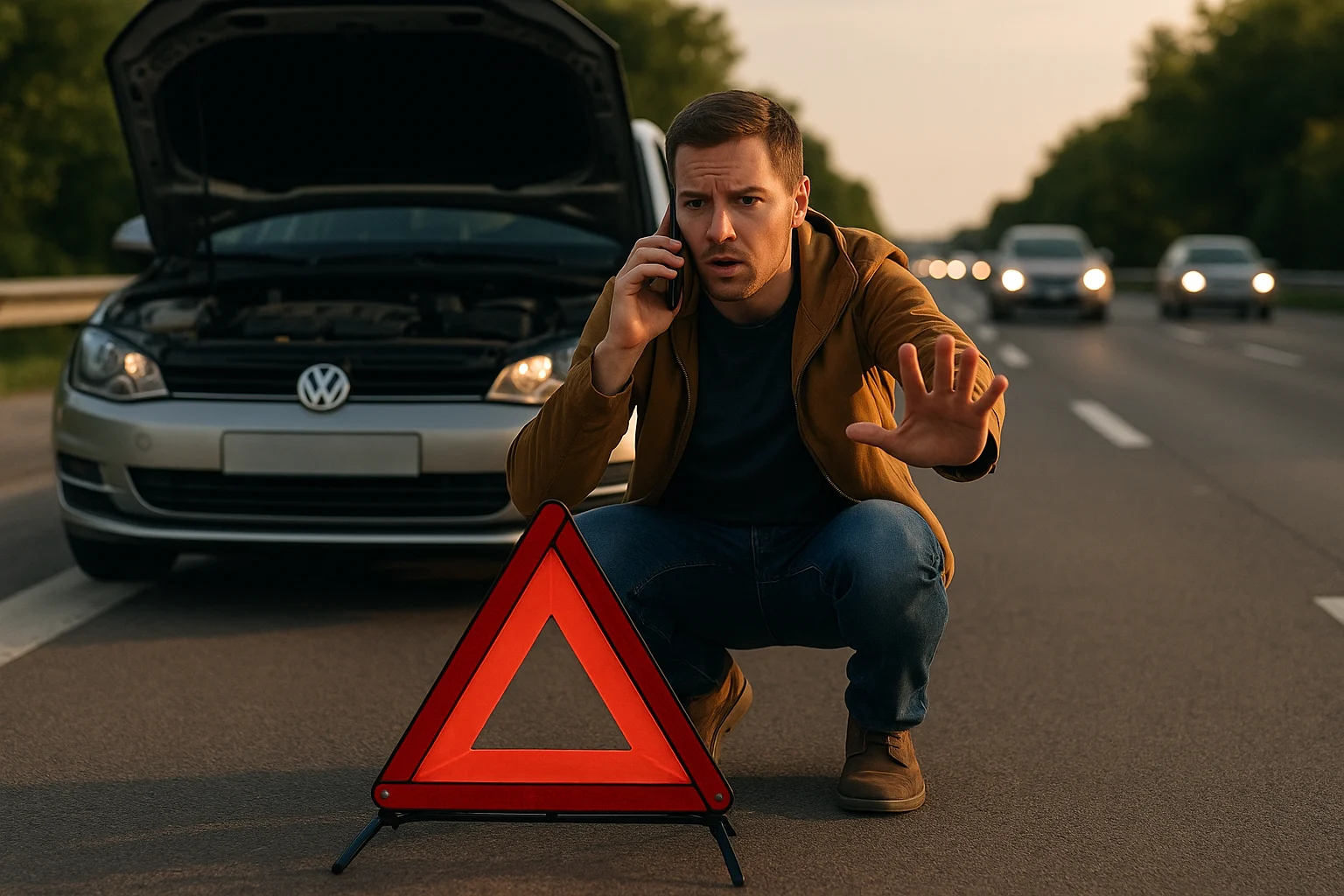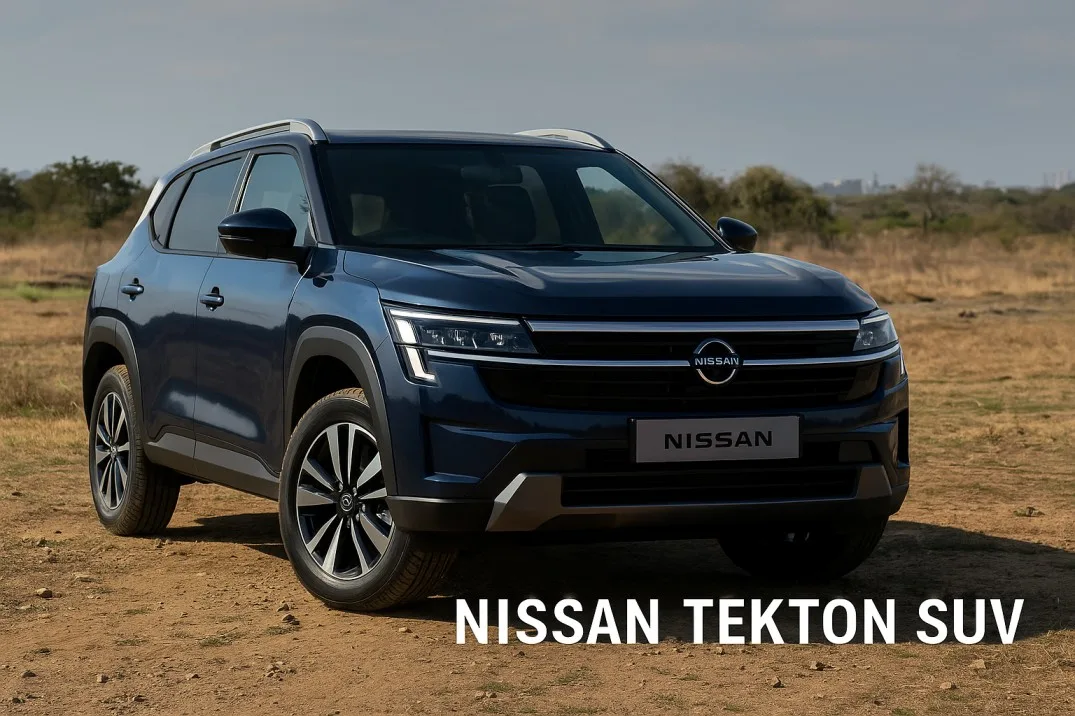Purchasing a vehicle is one of the important financial decisions many of us take. However, before you drive home in the car of your dreams, there is an important decision to make: Should you either purchase your car on a loan or pay the full amount in cash?
Each decision option comes with pros and cons. Let’s look at each option to make clear which way makes more sense for you in the long run.
What Does Buying a Car on Loan Mean?
When you obtain a car loan, you borrow money from a bank or finance company to purchase your vehicle. You then pay back the loan in monthly installments, known as equated monthly installments (EMI), with interest.
Benefits of Car Loans:
- Less pressure on your savings account – You don’t have to empty your entire savings account to finance the vehicle.
- Improved cashflow – You can save your cash or use it for investing, or in case of an emergency.
- Improves your credit score – By having on-time EMIs, it shows your bank you can afford a loan, which can improve your creditworthiness.
Costs of Car Loans:
- Interest: You ultimately pay more than the car is actually going to cost.
- Long-term commitment: By signing up for a monthly EMI means you exchange some level of financial flexibility.
- Risk of default: If you do not make your payment on time, the lender may charge you a late fee and/or seize your vehicle.
What Does Paying Full Amount Mean?
A full hand purchase means you buy the vehicle outright without borrowing money and paying a bank or any other lender.
Advantages of Full Payment:
- No interest or extra fees – You pay the actual cost of the car.
- Full ownership from day one – You own the car 100% with no EMIs.
- No anxiety or stress of a payment occurring every month.
Disadvantages of Full Payment:
- An immediate hit to your savings – it will tie up a significant amount of cash.
- Reduced liquidity – it decreases available cash you may need for emergencies or other potential investments.
- Loss of upside – you lose the upside if the money were invested elsewhere.
Also Know: Should You Buy a Used Car or a New Car?
Cost Comparison: Loan vs Full Payment
Let’s assume you want to buy a car worth ₹12,00,000.
| Particulars | Car Loan Option | Full Payment Option |
| Car Price | ₹12,00,000 | ₹12,00,000 |
| Down Payment | ₹2,50,000 | ₹12,00,000 |
| Loan Amount | ₹9,50,000 | Nil |
| Tenure | 5 Years | Nil |
| Interest Rate | 9% per year | Nil |
| EMI | ~₹19,700 | Nil |
| Total EMI Paid (5 years) | ₹11,82,000 | Nil |
| Total Cost of Car | ₹14,32,000 | ₹12,00,000 |
Here, the loan option makes the car cost ₹2.32 lakh extra due to interest.
- Now let’s say that instead of paying in cash, you invested that ₹12 lakh. If you invested it as a mutual fund with a 10% annual return, in 5 years you would have an additional ₹7.7 lakh if the investment allowed for the compounding effect. Now, it would make sense to get a loan if your return on the investment exceeds the interest rate on the loan.
When Paying Full Amount is Better
Making a one-time payment is reasonable if:
- You are looking to save long-term.
- You have enough remaining cash left after purchasing.
- You like the ownership experience without monthly EMIs.
Example:
For instance, if you have ₹12 lakh in some savings and no other current expenses, a one-time payment will not incur interest leading to savings of thousands of rupees over the 5 years.
Check: How to Transfer Car Insurance to a New Owner in India (Complete Guide)
When Taking a Loan is Beneficial
A car loan can be the smarter choice if:
- You would like to keep liquidity for emergencies.
- You can earn a return on an investment that is greater than the interest on the loan.
- You would like to build up your credit score or take advantage of tax benefits (if, for example, the vehicle is used for business).
Key Factors to Consider Before Deciding
1. Your existing savings
If your savings are adequate even after the full price payment, a lump sum is better. If savings are low, taking a loan provides financial protection.
2. Income stability
If your job/business provides stable income, paying EMIs is affordable. If your income is unpredictable, do not commit to a loan.
3. Future plans
Are you going to get married, buy a house, or start a business in the near future? A loan creates liquidity.
4. Emotional peace vs Financial flexibility
Would you prefer the peace of mind that comes with no EMI, or the flexibility of more savings?
Middle Path: Higher Down Payment + Smaller Loan
Instead of going totally loan or totally cash, some buyers use a balanced approach.
For example:
- Pay 50–60% upfront.
- Take a small loan for the rest.
This reduces your interest burden and keeps some cash safe.
Who Should Choose What?
Select Car Loan if:
- You wish to keep liquidity.
- You can invest elsewhere with higher returns.
- You do not want to completely deplete your savings entirely.
Select Full Payment if:
- You want to save predominantly money over the long run.
- You want to eliminate the stress of EMIs.
- Even after going through the purchase, you still have adequate savings.
Smart Strategy: Invest Cash + Take Car on EMI
One of the most smart strategy that a buyer can use is as followed:
- Retain your cash and invest it in a fund or instrument with a return greater than your loan interests.
- Take the car on a loan and pay your monthly EMIs.
For example ;
- Car Price: ₹12,00,000
- Take Loan: ₹10,00,000 at 9% interest for 5 years ( EMI will be ₹20,700)
- Invested Cash: ₹12,00,000 in Mutual Funds at 10% annual interest rate.
- Total EMI paid after 5 Years: ₹12,42,000
- Investment Growth after 5 years: ₹ 19,26,000
You not only pay off the car but also make a profit of ₹6.8 lakh!
This strategy only works if your investment returns > loan interest rate; allows you to shift what could be a cost into a financial benefit.
Conclusion
- Spend the Least Amount of Money: Pay it All
- Flexibility and Wealth Growth: Take Out a Car Loan + Invest the Cash
- Moderate Option: Pay Part + Take Out a Small Loan
Overall, the best option really depends on your situation, income stability, and long-term goals. The goal is to drive and enjoy your new car while you don’t have to worry about the money.





